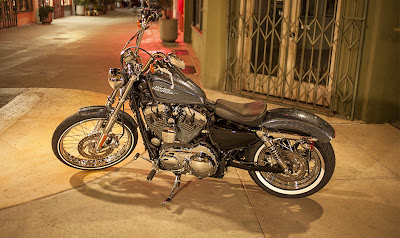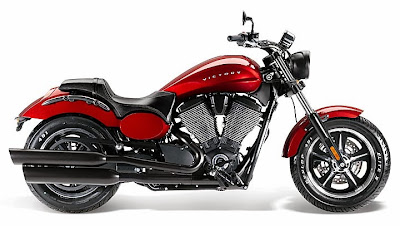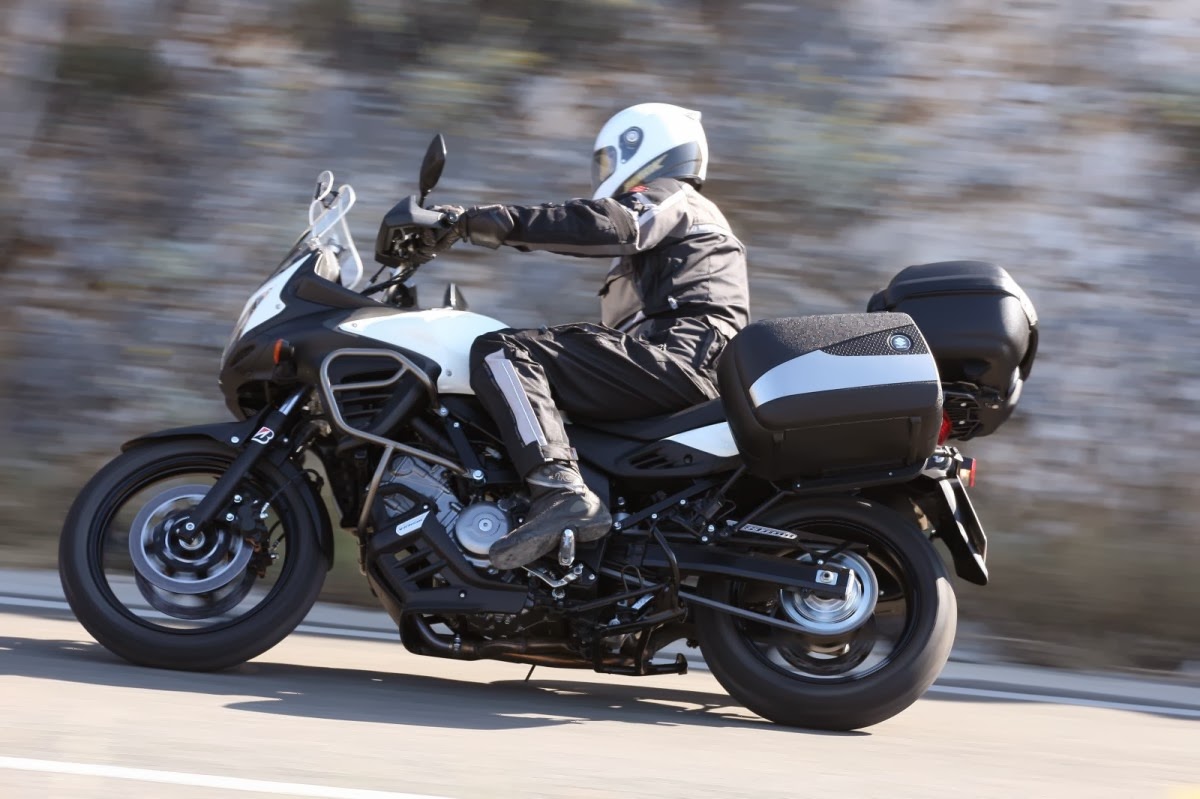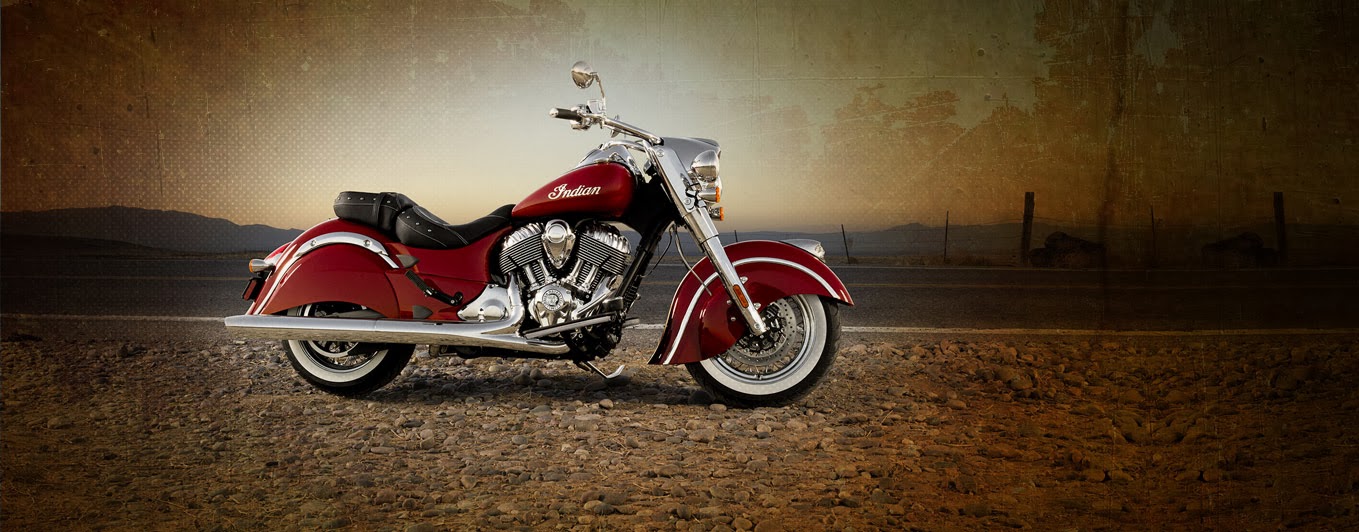![]() |
| The goal... |
Not too long ago, my wife and I were talking about setting goals. In trying to inspire my imagination on the subject, she asked me what bike I'd like to have. I danced around in my head for a few seconds and because I had recently written that
post about sport tourers I found myself telling her I'd like a BMW F800GT.
"What is that?" she asked. "I don't know that one."
I quickly did an internet search on my phone and pulled up a picture.
"That looks like the bike you already have," Jenn said. "What about a real bike? A proper bike? This is supposed to be about setting goals; don't sell yourself short. What bike do you really want?"
I blinked at her for a moment. This exchange had illustrated two things:
- I don't aim high enough in my thinking. That is true in terms of how I think about my future, how I think about my career, how I think about my physical and mental self, and even in how I think about motorcycles. I mean, a BMW F800GT? That's the apex of my daydreaming? What?! Fuck that noise.
- My wife doesn't see my present bike, a Honda CBF600SA, as a real bike. I get what she means, and deep down in my soul I know she's right.
![]() |
| But does it come in green? |
"Well, I guess the bike I really want is an
Indian Chief Classic," I said.
"That's one from Minnesota?" she asked.
"Yeah, well,
the parent company is based in Minnesota. The bikes are made in Iowa, but close enough. Both places are cold and flat, populated by heavy drinkers."
"What's it look like?"
I produced an image on my phone.
"That is a nice motorbike, babe," my wife said. "I really like that one. Can you get it in green?"
"Uhm, I think it's just black or red," I said (though you can also get it in blue). "I guess you could probably pay someone to paint it green."
"You should get it in green."
I've told the story before that, as a little girl, Jenn had a prized sticker book full of motorcycles. She had a soft spot for her father's Honda CB650, of course, but the machines she loved most were the classic Triumphs, especially those painted in
British racing green.
So, yes, one day –– some day –– I will get an Indian Chief Classic and I may even have someone paint it green. I will put Jenn on the back and roar the engine and listen to the little girl in her shout and howl and cheer as we ride into the wind.
![]()
But, in the
immediate future, although I accept the truth of what I just said about aiming too low in my thinking, it may not be realistic. I'm simply not in a position to produce the £18,500 that is the Chief Classic's asking price. Maybe in a decade or so. Right now, though, aiming for something that costs about £10,000 less strikes me as more do-able.
So, when I think about my next bike, what my next bike will actually be, whether it's a
cruiser, or a
sport tourer or an
adventure motorcycle, I tend not to want to stray too far from that "realistic" price point. Fortunately, there are a lot of classically styled motorcycles that are up to the challenge. And for the last of my posts looking collectively at my biking options, that's the style I'll be focusing on.
There's a fine line between a cruiser and a classic/retro/standard, and some of the bikes I've added to the list below tend to straddle that line. Some are better than others in performance, but all are beautiful –– real –– machines. Here's a look:
Price: £5,199
Basic stats: 399 cc, 23 bhp
About: A cute little machine that for me produces memories of 1970s/1980s TV shows like CHiPs, in which plucky teens manage to escape comedy villain drug dealers by riding through a mall or across a baseball field. Yamaha pitches the bike as a platform upon which to build all your hipster dreams. Well, they don't quite phrase it that way, but I'm pretty sure that's what they mean when they say: "Create your own cafe, bobber or scrambler." Interestingly, though, Yamaha seems to miss a trick in failing to offer an accompanying accessory list. As stock, the SR400 strikes me as a good little bike for in-the-city commuting, though not much else.
Would I buy it? No. Only 23 bhp and equipped with a drum brake at the rear, it is just a little too genuine in its old-school credentials. And my financial perspective means it's very hard for me to appreciate a bike that can't serve a wide range of purposes. I can't afford a stable of bikes; I need a machine that can serve me in all paved situations, be it country lane or high-speed motorway. Also, I am not really creative enough to build my own cafe, bobber or scrambler. I never have been; this is why Lego is a bad choice when considering birthday presents for me.
Price: £5,199
Stats: 535 cc, 29 bhp
About: You could pick any of Royal Enfield's roster for this classics list. So, I went with the one I like most: the Continental GT.
It is Royal Enfield's newest model –– in both real and design terms. Other REs have been around more than half a century and remained relatively unchanged in all that time. Certainly there's a romantic appeal to such an idea, to the extent that for a while
I was very seriously considering getting one. However, that was when I was weighing it against the possibility of a 125cc Honda Varadero. Despite being the newest of Royal Enfield's lineup, the Continental GT holds proper old-school credentials with its single-cylinder air-cooled engine, kick starter, and 1960s styling.
Would I buy one? No. Sure, it looks the part, but the reporting is that it is under-powered and quite possibly incapable of "doing the ton," which, of course, is the philosophical purpose of any cafe racer. Additionally, it comes from a company with an unsteady reputation when it comes to quality. Some of the parts are said to be cheap, and it remains unknown as to whether the Continental GT will fall victim to some of the same horror-story flaws you hear about other Royal Enfield machines produced in the modern era (e.g, cracks in the frame). Additionally, it's clear Royal Enfield is selling an idea as much as they are a machine. The landing page for the Continental website is a collage of pictures in which the only things that are clear are the Royal Enfield logo and sexy people's faces. You have to click elsewhere to see the actual bike. It almost feels as if the Continental GT is a clothing line, with the bike serving as an afterthought.
Price: £6,932
Stats: 744 cc, 48 bhp
About: Hey, would you like some sexy with your sexy? Honestly, if you can look at this bike and not have some part of your brain yelp, "Me want!" you need to seek psychiatric help. You are mentally imbalanced; you are a danger to yourself and others. Because the V7 Stone is a sexy muthahugga of a machine. Of all the bikes on this list, the V7 Stone is undoubtedly the most art-like piece. There as an attention to just about every detail. That's it's Italian heritage showing, perhaps. The bike is unique in that the look-at-me air-cooled engine spins a shaft drive, eliminating the old-school tediousness of fussing with a chain. It has good brakes and, according to most reviews I've read, handles a little better than the bikes that compete with it in looks/price/power. There are conflicting reports as to the bike's reliability, however.
Would I buy one? Yes. I'd be just a little wary because the Moto Guzzi dealer network is a little thin. There doesn't appear to be a single Moto Guzzi dealership in the whole of Wales. But, hey, Wales is a great big poop hole when it comes to just about everything that can't be bought at Asda (the British face of Walmart). My only other concern comes in the fact that when I look at the bike on
Cycle-Ergo.com, it shows my knees/shins banging up against the engine. I have heard that the V7 Stone isn't exactly tall-person friendly, so a test ride might clarify my view.
![]() |
| Captain America astride the Harley-Davidson Street 750 |
Harley-Davidson Street 750 Price: £?,???
Stats: 749 cc, ?? bhp
About: I mentioned earlier the fine line between cruiser and classic/retro/standard. Let's imagine that line exists at knee angle: a bend of more than 90 degrees means a cruiser, and a bend of less than 90 degrees means something else. Based on that, the Street 750 is a standard. Or, at least, it is when being ridden by Captain America, and I'm perfectly happy to have Captain America serve as the definer of all things. How do you correctly load a stapler? The way Captain America does. What's the correct pronunciation of "poinsettia?" The pronunciation used by Captain America. So, if his knee angle suggests he's riding a standard motorcycle, head-on toward a giant hovering gun ship, the Harley-Davidson Street 750 is a standard.
The bike has yet to be released (and won't be in the UK until at least 2015) but Harley-Davidson is clearly expecting it to be a success and throwing the weight of its PR machine behind the project. I think a big factor will be how much power the 750cc engine produces. With a radiator, one would expect it to produce at least 55 bhp, but that would mean its outclassing the
XL883, which is one of Harley-Davidson's best sellers.
Would I buy one? No.
I've written about the Street 750 before and my objections to the bike have nothing to do with the existence of a radiator or the fact that it will be made in India. Harley-Davidson seems desperate to twist what the definition of "is" is and suggest differently, but, come on, we all know those are going to be India-made bikes. And that's OK. India is awesome. My problems with the bike are threefold:
2) A
somewhat unofficial ride review of the 500cc version of the bike suggests it is like a match involving WWE superstar Big Show: lots of hype, but ultimately disappointing.
3) The more I look at this bike the less I like the look of it. That's purely subjective, I know, but when you're considering a classic/retro/standard a big part of the consideration is the way the bike makes you feel.
![]() |
| Kawasaki W800 |
Kawasaki W800Price: £6,899
Stats: 773 cc, 47 bhp
About: Usually mentioned in the same breath as the Triumph Bonneville (see below), the W800 is the quintessential classic bike. Strangely, the bike is not available in the U.S.-market, where I think it could perform well. Americans take a certain pride in being an emotionally driven people and it's no secret they're the catalyst for the current classic/retro/standard craze. In the countries where it
is sold the W800 has earned a decent following, with most reviewers making a direct comparison to the Bonneville. In recent years this comparison seems to have become lopsided, as the W800's power output has been reduced to make it adhere to A2 licensing standards. The engine is air cooled and the retro authenticity extends all the way to the bike's rear drum brake.
Would I buy one? No. Drum brake. Additionally it is less powerful than the Triumph Bonneville, doesn't carry the same legacy, and costs more.
Triumph BonnevillePrice: £6,549
Stats: 865 cc, 67 bhp
About: The very definition of a "real" motorcycle, according to my wife, the Triumph Bonneville is pretty much at the heart of the classic/retro/standard class, the way a Harley-Davidson is at the heart of the cruiser class: it is the machine by which all others are measured. Slightly notorious for a less-than-spectacular suspension, it is otherwise beloved by riders and motorcycle journalists alike. Especially those that live in Her Majesty's United Kingdom of Great Britain and Northern Ireland. One of my favourite tales is of the Bonneville owner who put too-loud pipes on the bike and found that even little old ladies were still giving him warm nods of approval –– such is the love of Triumph's old-school legacy.
![]() |
| Triumph Bonneville |
The Bonneville has already shown up twice (
here and
here) on
my What I Want list, not to mention the times it has shown up in the guises of the America and Speedmaster, which have the same engine. Time and time again it served as inspiration in my wanting to get my UK license and though I really do value my Honda CBF600SA, I'd be lying if I said I don't wish –– every time I ride –– that I had instead ended up with a Triumph.
Indeed, I may end up correcting that "error" sooner than expected. My wife, of course, is among the millions of Britons carrying a deep love of Triumph and she recently suggested I test ride a Bonneville. She didn't have to say it twice: that night I booked on for a demo ride. And since then I've been reading more about the Bonneville and falling even more in love with it.
An air-cooled twin, the stock Bonneville is, admittedly, a little no frills. It has that less-than-spectacular suspension, of course, and lacks a tachometer. Little things like clocks and gear indicators are equally nonexistent. But the bike serves as an easy platform to infinite modification. Type the phrase "Bonneville accessories" into Google and you will find company after company dedicated solely to helping you make your Bonnie
exactly how you want it to be. It is a popular bike, so there are
a lot of parts available.
And perhaps because of that it seems to be a frequent choice for long-haul riding. I had read reviews lauding the Bonneville's nimbleness in curves and urban situations, but in my recent research I have also found quite a lot of people who will just as quickly sing its praises as a means of getting from one end of a continent to the other.
Would I buy one? Yes. Have you read this blog? You bet your boots I'd buy one. Indeed, I get the shakes in thinking about my upcoming Bonneville test ride because I just may not be able to resist.
Indian ScoutPrice: £?,???
Stats: ??? cc, ?? bhp
About: At the moment, the Indian Scout is nothing but a rumour. And not a very solid rumour at that. As best I can tell, only one media outlet is reporting that
a new Indian Scout is in the works, but that's enough to get me excited. And when you think about it, the Scout is an obvious choice as Polaris-backed Indian expands its range. After all, Burt Munro's 1929 Scout is one of the most iconic motorcycles in history –– something Indian acknowledged in building its one-off
Spirit of Munro motorcycle. What I'd like to see is something smaller and more affordable than the big, beautiful machine that sits at the top of my list of goals. If I could have my way, the Scout would be a machine to compete against the Bonneville or Honda CB1100 (see below) in terms of agility and price point. I'm perfectly happy for it to have a radiator, like the aforementioned Harley-Davidson Street 750, but I'd hope that more effort would be put into style and performance than with the HD. I want something that's really worth wanting. And like the Triumph I'd like the new Scout to be a proper all-rounder: the kind of bike you can ride to the bar to look sexy, or strap bags to it and follow the North Star.
Would I buy one? Yes. Oh hell yes. All that gushing praise I spilled out for the Triumph Bonneville? Forget it on the day a new Indian Scout comes into being. Honestly, I love Indian motorcycles so much that I would be willing to pay a deposit on one today, right now, without any idea of what it will be or when it will be available. Just promise it will exist and take my money.
Honda CB1100 Price: £9,199
Stats: 1140 cc, 88 bhp
About: The CB1100 is kind of the motorcycle version of what happens when Mormons produce hip hop: there's a little too much dedication to message over medium. And what is the message of Honda, whether in motorcycles, cars or riding mowers? It's basically this: "We make efficient, reliable, modern products at an agreeable price."
You will note the absence of emotive words in that message. There is no silliness about freedom or personality or feelings. No, Honda makes objects that are designed to get you from point A to point B, and it sells 18 million such objects each year, thank you.
But you meet the nicest people on a Honda, and nice people want you to be happy. And, well, if you want a bike that looks like the thing your dad had to sell in order to pay for your MMR shots back in the 70s, OK. Well, maybe. Because Honda can't quite remember the bike your dad rode, so it's cobbled together a bike that's a bit like the radio stations your dad listens to: All the hits from the 70s, 80s, 90s and today!
It is a bike that lacks a certain amount of soul. In terms of efficiency and reliability the CB1100 is superior to most of the other bikes on this list, but it is down there with the Harley-Davidson Street 750 in lacking any real kind of soul.
Would I buy one? Maybe. Honda struggles a little bit in this genre of motorcycle because it can't quite let go of what Honda is to be able to embrace the coolness of what Honda was. And what it was is what it is: a company that produces efficient and reliable machines. In the 60s/70s/80s, from which the CB1100's style cues are drawn, those bikes were the most efficient and reliable around. They became cool through the power of hindsight. For example, in the present, Robert Pirsig's CB77 Super Hawk is cool; it wasn't in 1964. It was efficient in 1964; it isn't now. This creates a challenging dichotomy for Honda: how to put together a machine that is efficient and reliable by modern standards whilst still somehow capturing the unintended coolness of a machine that was only ever supposed to be efficient and reliable. By and large they seem to have aimed for the middle ground and hoped for the best.
All that said, I do like the look somewhat and I'm a proven sucker for efficiency and reliability. The question I have, though, is whether it all adds up to the price tag. I don't think it's £9,199 of coolness, and I don't think it's £9,199 of reliability and efficiency. But maybe, possibly, it's enough of both.
Price: £11,600
Stats: 1170 cc, 110 bhp
About: If Honda is struggling to cram together its modern and classic selves, BMW is making valiant efforts to offer a modern definition of "classic." The newly released R nineT (a homophonic tribute to the old
R90 S) is very clearly a machine of the present day, but with a deliberate aim of becoming the sort of machine over which old men swoon and tell exotic tales. You can see that in the way they promoted the bike by taking
Roland Sands and dudes from
Blitz and
El Solitario, and a few more whom I can't really name off the top of my head but recognise as gods of the custom-build scene, out to some scenic location to ride the bikes around and drink beer. One could argue that this is the new Scout as it should be, just made by a different company. It is beautiful, powerful, agile, and easy to customise.
The bike is not yet out but reviews are soaring in praise.
Motorcycle News went so far as to suggest BMW had "completely nailed the modern rider's desires" with the bike. In talking about its ergonomics,
VisorDown said"the bike was just too engaging for any trace of discomfort to register."
Would I buy one? I'd like to. I mean, truth is, if I had nigh £12,000 I'd probably be spending it on a making a solid deposit toward an Indian Chief Classic, or perhaps on creating the most swagged-out Bonneville ever. I could buy two Continental GTs and ride them like a team of horses. But there's no denying the R nineT is a sexy thing. It's got a certain something that reminds me of the
Arch KRGT-1 but, you know, cheaper and almost certainly more reliable. If anyone wants to give me one, I promise not to complain.
And that's the list. I've now gone through All The Bikes. All of them. There are no more bikes. Ever. I can pretty much shut down the blog now.
Erm, maybe not. Perhaps, though, I'll not do any more massive every-bike-I-can-think-of-in-a-given-class posts like this. They are a bit long. But, at the same time, I think they illustrate the underlying truth and philosophy of this blog, which is that motorcycles are awesome. All motorcycles. Even the ones with drum brakes.
That's a philosophy that I picked up from Jamie Robinson, of
MotoGeo fame. I've mentioned many times before that
the video of him exploring Sequoia National Forest was (and remains) hugely influential in my thinking about motorcycles. At the end of each video Jamie does, he stresses the value of simply getting on two wheels and going somewhere. It doesn't matter the two wheels, it doesn't matter the where, just twist the throttle and go.
For me personally, that philosophy is easiest to grasp when I think about cruisers or classic/retro/standards (can someone please tell me the real name for this class of bike?). That is a reflection of my perspective and my experience, or lack thereof, I know, but these are the bikes that get me the most excited. The bikes that make me giddy. Oh, and did I mention that Jamie Robinson explored Sequoia National Forest on a
Triumph Bonneville?
So, when I think of my top three from this list, the Triumph Bonneville comes first (with the caveat that it will be bumped down to the no. 2 slot as soon as the Indian Scout exists). After that, I'd choose the Moto Guzzi V7 Stone and the BMW R nineT.
What do you think? Have you ridden any of these? Are there any modern classic/retro/standards that I've left out? And if you could design the new Indian Scout what would it be?


























































